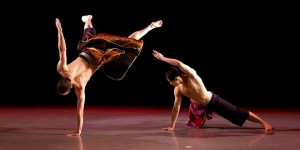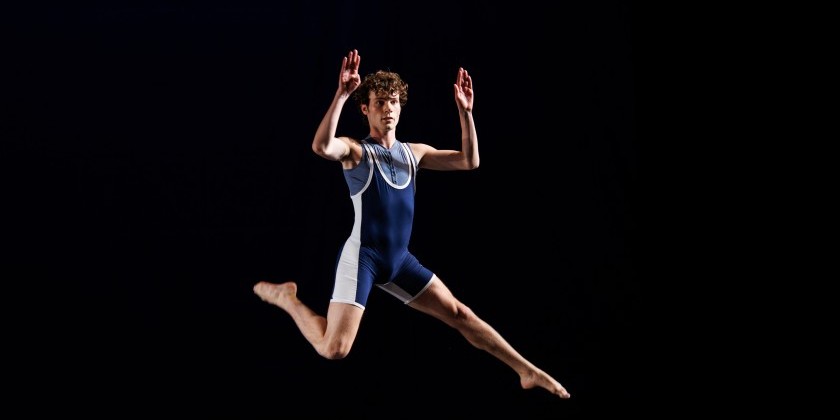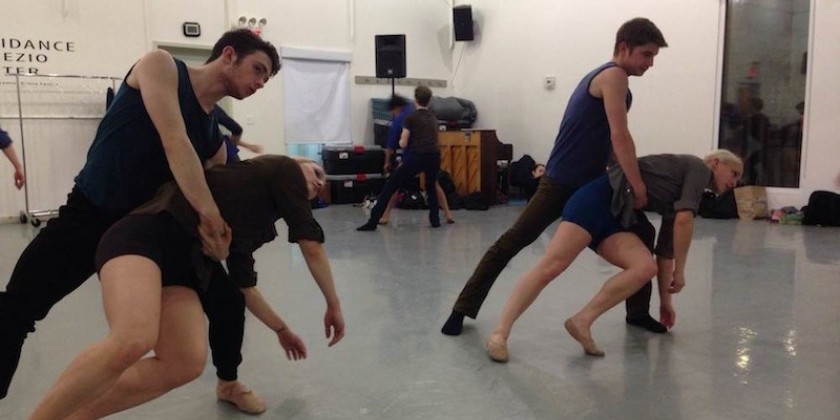The Dance Enthusiast Hits the Streets to Ask About Memory

Nia Love and Marjani Forte Talk About "Memory Withholdings"
"Memory Withholdings" will be performed At Brooklyn Arts Exchange
Friday-Saturday, April 25-26 @ 8:00pm | Sunday, April 27 @ 6:00pm
Tickets: $15 General | $8 Low-Income
To Purchase tickets go to https://web.ovationtix.com/trs/pr/933356
Go to the artists' website for more information
After several years of development prior to and within their 2-year residency at BAX, Love|Fortè, A Collective, has created a project that examines the notion of memory residing in the bodies and practices of African descendant communities in North America.
The Dance Enthusiast had the opportunity to sit in on a Workshop in Memory at the Cumbe Center for African and Diaspora Dance and speak with Nia Love and Marjani A. Forté about their collaborative process, their teaching philosophy in regards to memory, and their piece Memory Withholdings. Take a look at what they had to say.
Nia Love (blue top) Leading a "Memory Witholding's Workshop" at Cumbe Center for African and Diaspora Dance in Brooklyn - photo TDE Intern Ashley Lopez
The Dance Enthusiast: Can you talk about how you began to collaborate?
Marjani A. Forté: How did it come about? Well, I think there is a long and short version of that, but I’ll do the short version. Nia was in residence at what is now called New York Live Arts ( it was Dance Theater Workshop at the time) doing a studio series. I had been taking Nia’s class and was working with her on a project. As we were working together, we connected. I connected to the way that Nia was engaging audiences and challenging the way that performance was perceived.
I remember Nia said we should talk about coming together. That’s the paraphrasing, I don’t remember the exact words but it went something like that. I was like yea! I was pretty intimidated at first because Nia is twenty years my senior so I wasn’t clear on how that would go.
How is the “experiment” experience?
Nia Love: The experience is an ongoing process. Each time we come together it changes. It is alive and always changing and morphing, going through all kinds of highs and lows and thickness and weights.
Marjani Forte (red pants(n Leading a "Memory Witholding's Workshop" at Cumbe Center for African and Diaspora Dance in Brooklyn - photo TDE Intern Ashley Lopez
Can you talk about the idea of how memory is held in the body? How does that translate to your teaching philosophy?
Love: Memory is wide open because it’s not tangible. It’s kind of ethereal. It’s also nostalgic and can be full of pain and pleasure. I think the translation of memory on the body opens itself into all different kinds of gestures that are really predicated on emotion and depend on what the memory was and what it held. I look at the movement which I’ve been working on in my body for the last 30 years. It holds memory but I’m not always tracing what this memory is and where it comes from.
If I’m teaching, I look at what I feel and what my body remembers and we do it in class. I look at how people gravitate to it or swallow it up. It makes another avenue of understanding and predicts other kinds of information whether we are choreographing or teaching.
Forté: The work is also coming from a desire to evoke memory and a desire to remember. I think that so much of the history of African American women in particular has been erased. It’s not something that you really learn about thoroughly in your normal public school education.
We want to continue to peel back the layers of what that is, to understand our gestures, and understand the influence of our cultures. Particularly, the way that connects with diaspora including Latin American cultures. What is the understanding of the layers of rhythms? What do those rhythms teach us about who we are? How do we evoke and understand spirit? How do we connect socially and politically? How do we understand that? In understanding we can learn how to move forward. The idea of understanding memory is rooted in a search.
Nia Love (blue top) Leading a "Memory Witholding's Workshop" at Cumbe Center for African and Diaspora Dance in Brooklyn - photo TDE Intern Ashley Lopez
TDE: How is memory shown in Memory Withholdings?
Forté: I think that working with the piece over the past 3 years and looking at what embodying memory is has helped create it. We’ve been looking at memory through our lens as women. If I were to identify three portals or windows that we have gone into among the infinite, we’ve been looking at memory as spiritual beings by examining birthing and conjuring, and food.
Love: And also architecture.
Forté: I think that if you were coming to see this work, you would see those elements as being the sort of lenses or spaces that memory is unfolding.
You’ll see us talking about memory or evoking memory through who we are as women. You’ll see stories that have been passed down to us about food. What it is that we know about culture through recipe. You’ll see what it is that we know about memory through spirit and spiritual practice. You’ll also see what we have unpacked about memory from what it is that is living in spaces.










